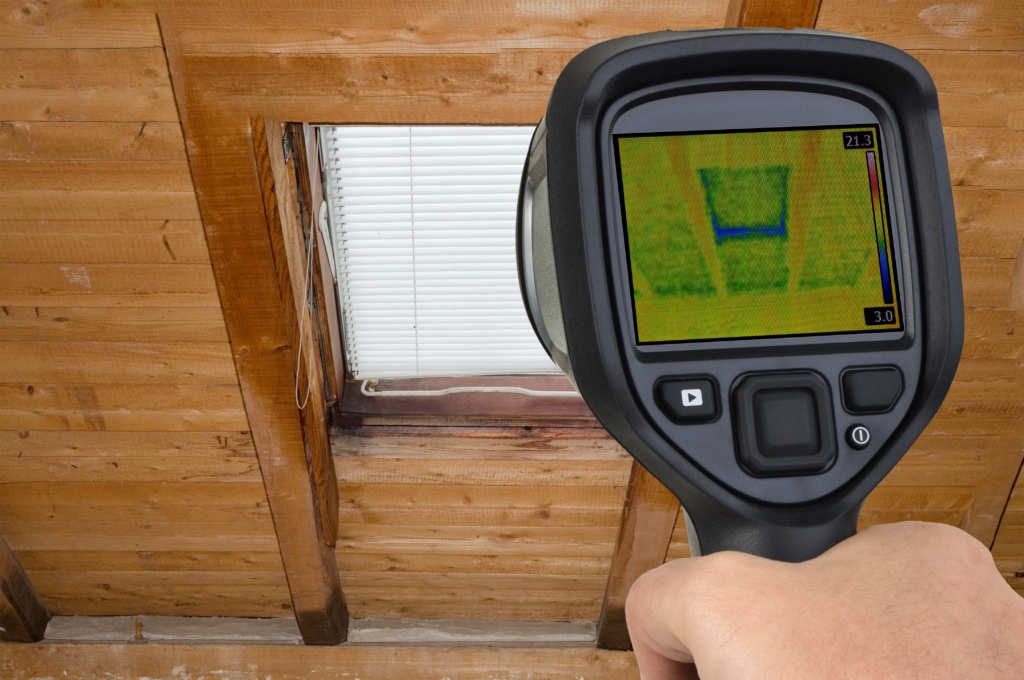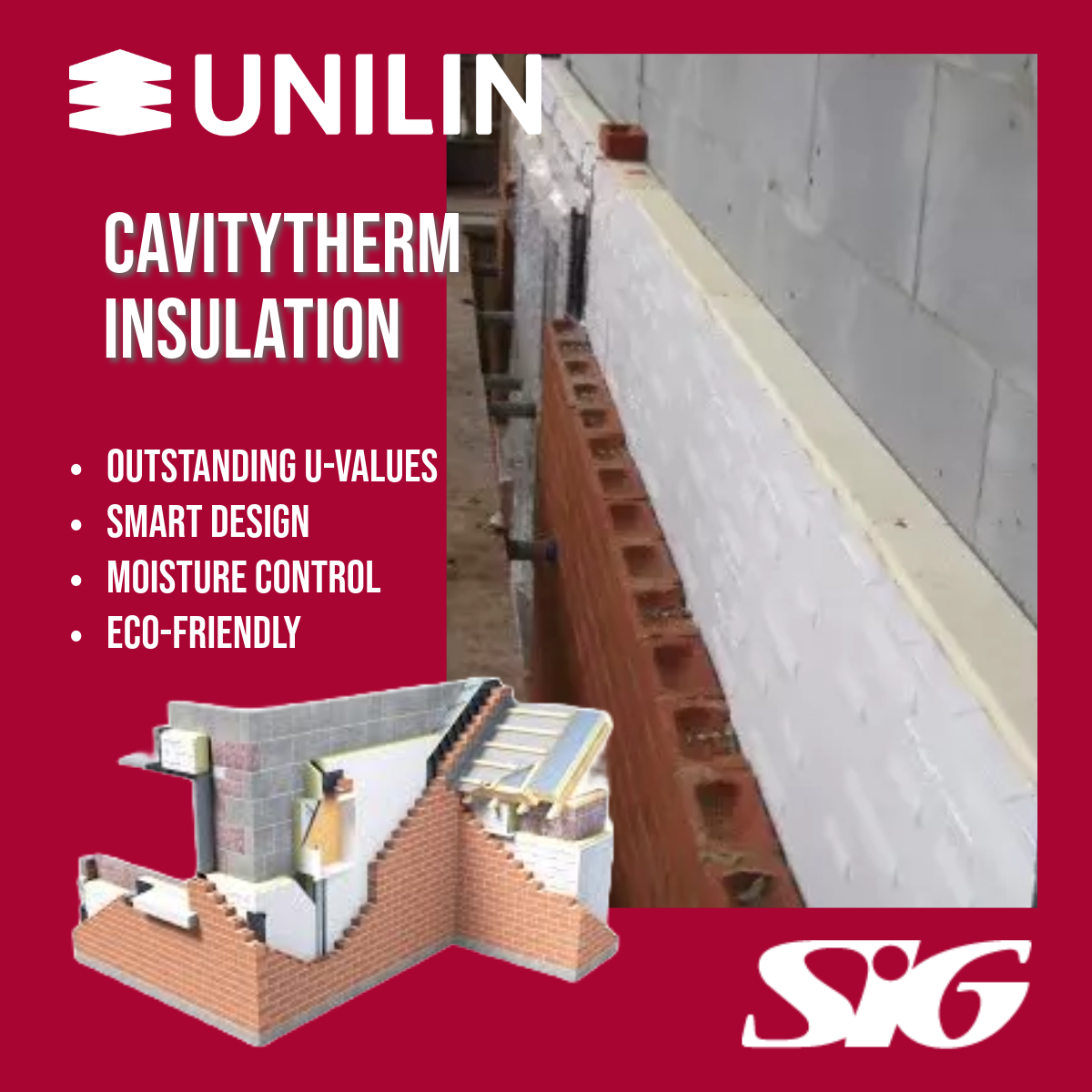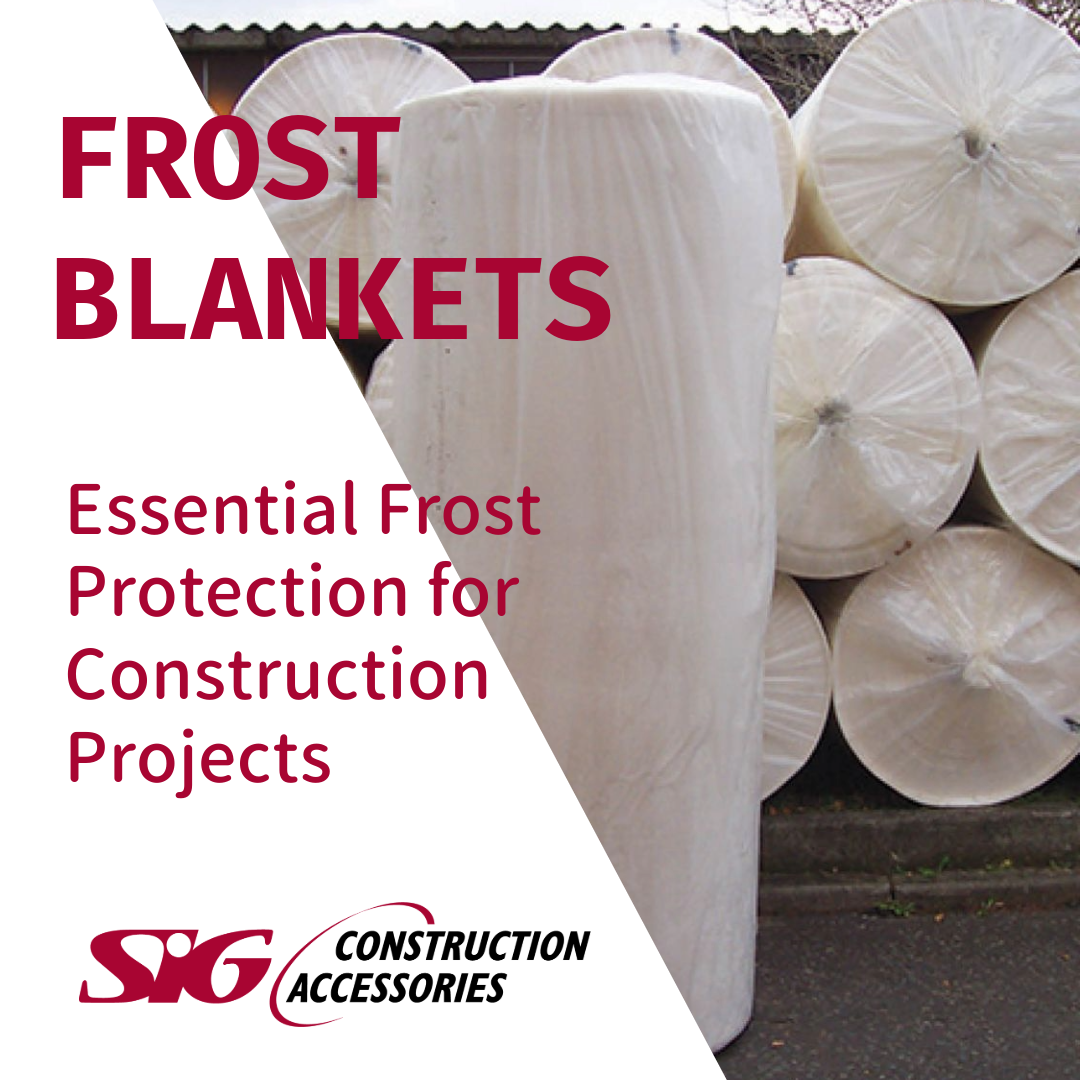 When you’re working on a construction project, there are always things to consider in terms of insulation and heat loss. You’ll need to establish what insulation is needed, where it should be installed, and, if you’re working on a new-build property, whether you’re compliant with regulations.
When you’re working on a construction project, there are always things to consider in terms of insulation and heat loss. You’ll need to establish what insulation is needed, where it should be installed, and, if you’re working on a new-build property, whether you’re compliant with regulations.
Another (often overlooked) factor in your construction project is thermal bridging. Thermal bridging can become a significant source of heat loss, often undoing the positive effects of insulation. As a result, you’ll need to become familiar with identifying and reducing thermal bridges as part of your work.
What is Thermal Bridging?
Thermal bridging happens when heat passes through a material that’s more conductive than the materials that surround it. This means heat is lost from the inside to the outside of a building in cold weather, but heat moves from the outside to the inside of a home during warmer days.
The term“thermal bridging” is so-called because highly conductive materials allow for a ‘bridge’ to form between the inner and outer parts of a construction.
This unwanted transfer of heat from inside the home to outside the home, or vice versa, makes a property less thermally efficient. As a result, owners of properties where thermal bridging is present can expect to spend more on their energy bills and have a higher carbon footprint.
While high-quality insulation is often introduced as a means to escape high energy bills and increased carbon footprint, thermal bridging can threaten its effectiveness. Alongside installing insulation and creating airtight building envelopes, combatting thermal bridging is a must.
A thermal bridge penetrates the insulation layer with a conductive material. This type of heat transfer tends to occur in a property’s walls and roofs.
Why Is Thermal Bridging a Problem?
When you’ve completed an insulation job for a client, the last thing you need is for the effectiveness of the insulation to be compromised. Since heat always tries to find the path of least resistance to travel through, thermal bridging causes a real issue for a home’s thermal efficiency.
Think of it like a gate. Even one gap in the gate could be enough to allow unwanted visitors into your home. The same goes for insulation, where even one thermal bridge could disrupt a homeowner’s attempt to curb heat loss.
You can complete an insulation job for a property, only for there to be a gap between the expected energy performance and the actual energy performance. Plus, because the inner surface of the thermal bridge will be cooler than its surroundings, condensation can form.
The longer condensation occurs, the higher the risk of mould growth, which presents long-term risks not just for the house itself, but for the health of its residents.
Types of Thermal Bridges
There are a few types of thermal bridges you can expect to see in a property. The main categories are as follows:
- Repeating thermal bridges. These occur when there are regular interruptions in the fabric of the building. Think of things like studs or wall ties.
- Geometrical thermal bridges. These occur in the space where two or three planes meet. Examples include junctions between different building elements, like corners. This typically happens when the heat loss area is greater than the internal surface.
- Liner thermal bridges. These thermal bridges occur where there are gaps in the layer of insulation that surroundings doors or windows. Alternatively, where a more conductive material penetrates the layer of insulation.
- Point thermal bridges. These are typically single points of penetration in a building’s thermal environment. Examples include fixings, brackets, fasteners, isolated steel beams, or a flue that passes through the well.
Where Does Thermal Bridging Occur?
Thermal bridges occur in areas where highly conductive materials penetrate the insulation, where two planes meet, or the building’s envelope is interrupted. They’re worse when there’s a continuous interruption by the conductive materials.
The way a home is framed is the most common reason for thermal bridges occurring. Even a simple 2×6 stud or 2×8 stud in the wall can provide that easy way out that allows heat to resist.
Here are the areas in which you’re most likely to find thermal bridging in a property and key problem areas to look out for during your next construction project.
- Window-to-wall junctions
- Door-to-wall junctions
- Wall-to-wall junctions
- Floor-to-wall junctions
- Studs and joists built into an exterior wall, ceiling, or roof
- Metal ties in cavity walls
- Window and door frames
Which Building Materials Transfer the Most Heat?
As well as understanding in which parts of a home or office building thermal bridging is most likely to occur, knowing which materials are common culprits can be useful, too, when aiming to reduce just how much heat is transferred from a building.
Metal, for example, is a much better conductor of heat than wood. Having galvanized steel studs in your wall will transfer much more heat. While steel framing can be superior in terms of strength and durability, you’ll need to bear in mind the fact that steel components are often key culprits of thermal bridging.
How is Heat Loss Through a Thermal Bridge Measured?
The method for assessing the level of heat lost through a thermal bridge depends on the type of bridge that’s present in the home. Repeating thermal bridges will be factored into the U-value calculation, while point thermal bridges can be calculated using a Chi-value which factors into the U-value.
The amount of heat lost through linear and geometrical thermal bridges is estimated using a separate calculation, known as the Psi-value. This measures the heat lost through the linear joint itself, but you can multiply it by the junction length to get the amount of heat loss for the entire junction.
To calculate the total amount of heat lost to thermal bridging, you can multiply the Psi-value for each junction by its length then add all the sums together. To find the building’s Y-value (the overall percentage of heat loss from the building), you can divide the total amount of heat loss by the area of external elements.
Why Does Thermal Bridging Need Preventing?
Thermal bridging is problematic in the construction of new builds as it can render any insulation installed less effective. For the sake of the effectiveness of your insulation and the reputation of your business, reducing thermal bridging is a must.
After all, the purpose of insulation in the first place is to make a property more thermally efficient, so anything that impedes it should be prevented.
How to Prevent Thermal Bridging
Given that the best materials at conducting heat are also the materials more likely to cause thermal bridging, you may fear having to choose between a home that’s thermally efficient and structurally sound.
Luckily, no such compromise needs to be made. There are plenty of clever design and building techniques you can use to prevent thermal bridging from occurring. You can use the following tips when constructing a new build to reduce the likelihood of thermal bridges occurring.
- Cover the studs with continuous insulation. During the construction process, insulation should be added to the wall system in order to break any thermal bridge. You can even insulate studs themselves with strips of insulation.
- Move or remove the material causing the bridge from the design. If you can easily identify which material is to blame, you can remove it at the design stage to avoid potential issues.
- Swap out the materials. Where there’s the opportunity, make a simple swap from a more conductive material to a less conductive one without compromising the structural integrity of the building.
- Build with SIPS. Structural insulated panels are a great choice of building material when you’re looking to reduce thermal bridging.
- Cover an external wall with insulation. This is one of the most straightforward ways to prevent thermal bridging, especially in homes that have already been built. The costs for external wall insulation can rack up, though, so present this option transparently to your client.
- Use advanced framing techniques. If you’re particularly well-versed in construction to combat thermal bridging, you can use advanced framing techniques to use a different type of frame that’s less conductive while still creating a home that’s as structurally sound.
Bear in mind the importance of installing accurately measured insulation too, to ensure all the necessary space is covered. Insulation boards in particular must be carefully measured and cut to fill a given space. Leaving gaps results in unwanted heat loss.
Can Thermal Bridging Be Reduced in Existing Properties?
Naturally, it’s easier to reduce the likelihood of thermal bridging in new build constructions than it is in existing properties. In existing properties, you’re more likely to be able to reduce the issue than prevent it entirely. Unfortunately, thermal bridging wasn’t as much of a concern in the construction industry in decades gone by, so you’ll find that many older properties suffer from this issue.
If you’re called out to an older property to address thermal bridging, the most straightforward solution will be to cover the thermal bridging with a form of external insulation. Suitable materials for doing so include mineral wool, polystyrene insulation boards, or brick masonry.
Luckily, adding a level of continuous insulation from the outside is pretty straightforward and it’s best done alongside an exterior cladding renovation. That way, when you install new siding, you can simply add continuous rigid board insulation underneath.
There’s no one-size-fits-all approach and the specifics of the property in question should always be taken into account.
Avoid Thermal Bridging with High-Quality Products From the Experts
Thermal bridging seriously threatens the thermal efficiency of any home and can undermine insulation. If you’re running a successful insulation business, the last thing you need is your insulation’s effectiveness to be dampened by these pesky heat escape routes.
The good news is, with the right techniques and products, you can prevent thermal bridging from causing an issue on your next construction project. At SIG, we’re experts on all things insulation and building a home.
As well as being one of Europe’s leading suppliers of insulation products with an insulating material to suit every project, our expert team is always on hand with must-know advice for your next build.
Visit our site and discover everything you need to make your next construction project a success.



